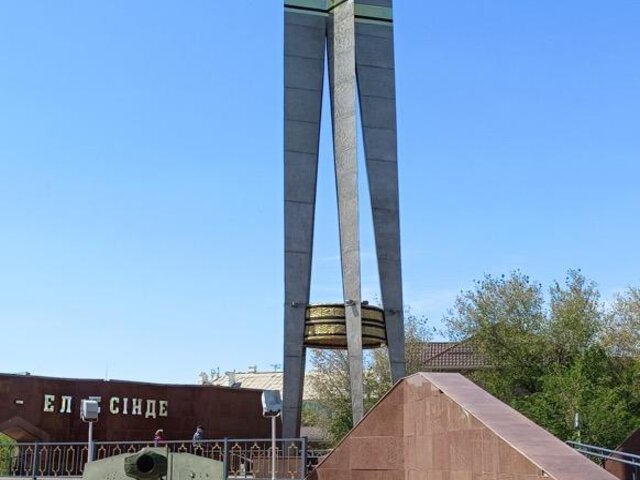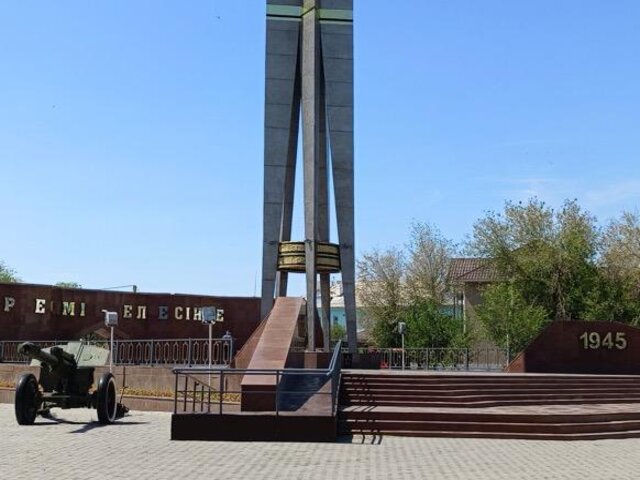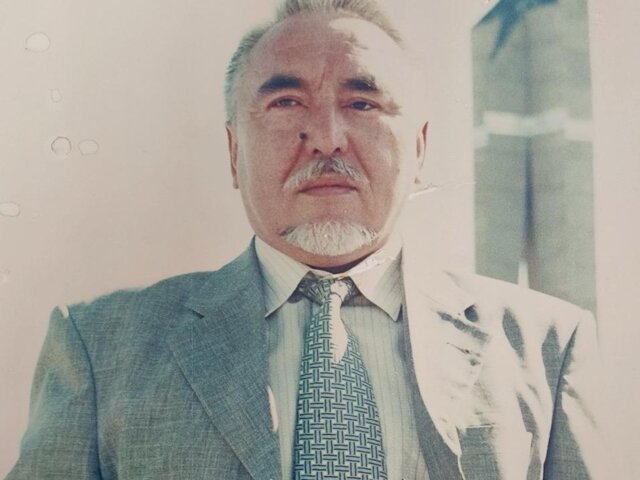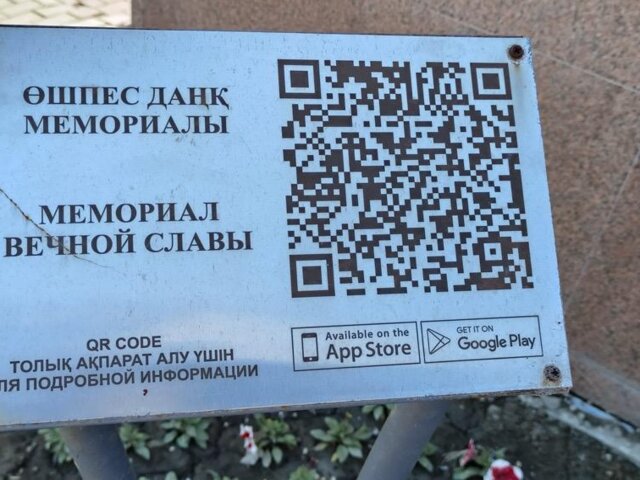Victory Park (Tagzym Square)
Victory Park in Kyzylorda, also known as Tagzym Square, is more than just a green space. It’s a place where history is etched in stone and metal. It’s most prominent structure is the Obelisk of Eternal Glory.
Unveiled in 1975 to commemorate the 30th anniversary of victory in WWII, the obelisk was the brainchild of Malik Sapargaliyev. He proposed to build the monument from titanium, a material rarely used in civil architecture, let alone memorials.
It was an ambitious idea. The obelisk wasn’t just meant to endure Kyzylorda’s harsh climate. It had to retain its beauty for generations.
Sourcing titanium in the Soviet Union during the 1970s was no small feat. But help came from Lieutenant General Valentin Fadeyev, head of the Baikonur Cosmodrome. Thanks to his support, the rare metal made its way to Kyzylorda.
A Factory With No Experience But Plenty of Grit
The task of building the obelisk fell to the Kyzylorda Metal Structures Plant. Its director, Lev Fleischman, quickly mobilized his team. Though the plant had never worked with titanium before, they didn’t hesitate.
Argon welding was used to assemble the pieces, secured with specialized rivets. Experts from the local airport and railway depot were brought in to help. Against the odds, the obelisk was completed just in time for Victory Day.
Details Worth Seeing
The obelisk stands 20 meters tall (66 ft) atop a granite pentagonal base, reached by a wide staircase. Its tip is shaped like a five-pointed star, supported by five triangular beams radiating downward.
At the base burns the Eternal Flame, set within a bronze star. Between the supports, suspended three meters off the ground, hangs a massive bronze wreath. Surrounding the monument, granite slabs bear the inscription "Er esimi – el esinde" ("A hero’s name lives on in the memory of the people").
Fifty years later, the titanium still gleams. The flame still burns. And the obelisk remains one of Kazakhstan’s rarest and most resilient monuments.
Honoring Other Tragedies
Victory Park also commemorates more recent chapters of hardship and heroism. Four granite memorials pay tribute to those who served in the Soviet-Afghan War, the responders of the Chernobyl disaster, the victims of nuclear tests at the Semipalatinsk site, and the Kazbat soldiers who defended the Tajik-Afghan border between 1992 and 2001. Another sculpture depicts a rider seemingly emerging from solid rock. It honors the victims of the December 1986 uprising.
Victory Park isn’t just a collection of monuments. It’s a shared space where the past lingers in the silence. A place that speaks of the price of peace, the ache of loss, and the strength of unity.
How to get there?
You can get to Victory Park by buses #1, 5, 6, 7, 16, and 17.
Other tourist attractions near the park:
- Central Park
- Monument to Batyrkhan Shukenov
- Church of Our Lady of Kazan
- Railway Park
- House of Culture





